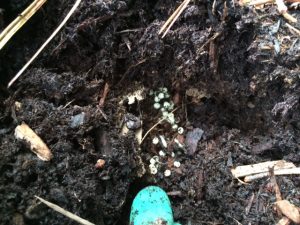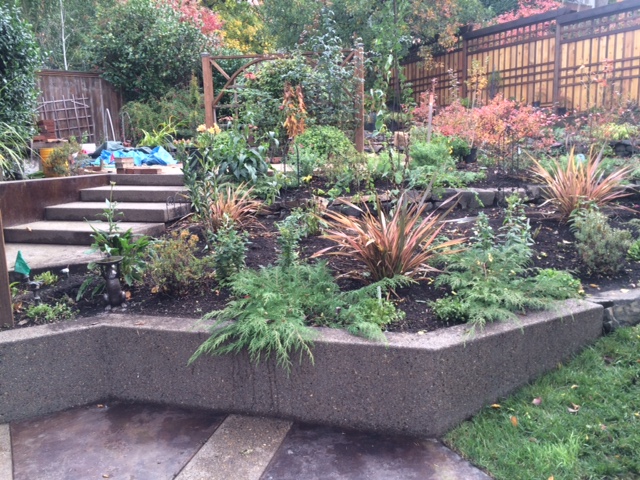With October looming and the scent of fall in the air, we are often busy scrambling to wrap up projects that we’d prefer not to do in the rain. The rain, however, goes hand in hand with many fall garden tasks; from loosening weeds in the soil to providing new transplants and fall plantings with a drink. And of course, the added benefit of washing the summer dust off vegetation.
This is a time of year when I am often helping people put their gardens to “bed”. Be it food, flowers or shrubs, there is a method to the madness of cleaning things up for the fall and winter season. When studying a landscaped space to make a plan of attack, I always try to think a step ahead, at the effects that my pruning, weeding, and thinning will have down the line.
First things first, I locate the perennials. Cutting back summer blooming perennial flowers like daylilies, crocosmia, and rudbeckia, will allow me to do a thorough cleanup and make garden beds easier to reign in. Some perennials often reseed and take over. This can be good if you want to form a colony or bad if they get out of control and take over established plantings. Cutting back seed heads before they drop and spread will save me weeding time in the spring. Many perennials can be dug up, divided, and re-planted at this time. A short handled digging fork is a great tool for this task, while a sharp knife can be used to cut through vegetation and thick roots.
Bi-Annuals like Foxglove (digitalis) and Lunaria (money plant) are a bit trickier. You may find vegetative starts of these popping up now while weeding away near a mother plant that has gone to seed. Nurse them along and they will flower next year, or dig them up and move them to a desired location. These will be a tender transplant, keep a close eye out and make sure that they get adequate water until established.
Annuals will also reseed. Sunflowers, cosmos, and alyssum have all been known to volunteer in the following years. Once they no longer look good enough to leave standing in the rain, sprinkle their seeds where you would like to see them pop up next year!
Ornamental shrubs in the landscape can benefit from a little care now to prep them for a possible harsh or snowy winter. Evergreens can be lightly shaken to get any “brown“ out. Natural dieback of needles can get caught up in branches throughout the dry summer months. I like using my hand rake or electric blower to get the buildup out. Look for any broken or damaged branches, ones that might be blocking a heating or cooling unit, or the numbers on your home. Evergreens can sometimes be a slug or snail hotel, it’s a good time to get them where they sleep.

Most deciduous shrubs and trees get pruned in mid to late winter. Now is a good time to reign in any wayward branches that might be broken or in a hazards way. Keep in mind as you do this, a later pruning can address crossing branches and height control.
A thorough cleanup now is an important step in preventing the spread of disease and overall plant health. Once the cutting back is done, weeds are pulled, and general cleanup is finished, I tuck in the beds with compost or mulch. A compost if I need to sweeten the soil, or mulch for protecting plant roots for winter. Lane Forest Products has a great selection of both for all types of plant needs.

This article was written by Oregon landscaper Heidi Branchesi of Heidi’s Timely Gardening Tips. Read more of Heidi’s Gardening Tips in our Expert Advice section.







